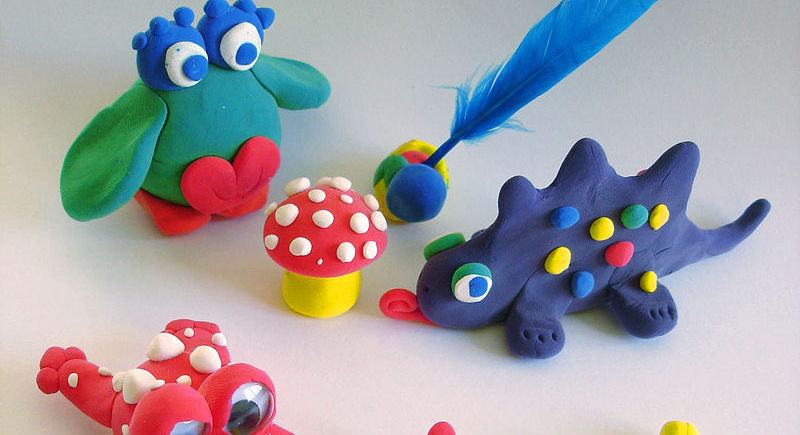The Happy Accident That Turned a Failed Wallpaper Cleaner Into Play-Doh
Behind one of the world’s most beloved toys lies an origin story you’d never guess. Play-Doh for some is childhood nostalgia, but it was never created for kids. The colorful modeling compound started life in Cincinnati as a wallpaper cleaner designed to wipe away coal soot from household walls.
How it got from there to being a kids’ plaything is an almost century-old tale involving a family business that nearly collapsed before stumbling into one of the biggest reinventions in history.
A Cleaner That Kept a Company Alive

Image via Wikimedia Commons/Letstown
Kutol Products was a Cincinnati soap company hanging by a thread in the 1930s. At that time, homes heated with coal left a sooty film on walls, and wallpaper couldn’t simply be scrubbed with water. Cleo McVicker, just 21 years old, promised Kroger he could supply 15,000 cases of wallpaper cleaner. The only problem was that he didn’t yet have a formula.
His brother Noah figured it out, and soon Kutol was producing a pliable putty that rolled soot off wallpaper without tearing it. The gamble paid off, and Kutol became the country’s leading wallpaper cleaner manufacturer.
For a couple of decades, the company did well. But progress caught up fast. Oil and gas furnaces replaced coal, and washable wallpaper became common. By the late 1940s, sales were in freefall, and the company looked destined to close. Cleo, too, tragically died in a plane crash in 1949, and his nephew Joseph McVicker stepped in. Joseph, who was young and facing his own health battle with cancer, needed a miracle product to keep Kutol alive.
A Teacher Spots the Potential
McVicker’s miracle product arrived in 1954 thanks to Joseph’s sister-in-law, Kay Zufall, a nursery school teacher. While looking for a safe material her students could use for holiday crafts, she stumbled across Kutol’s wallpaper cleaner. The kids loved squishing and shaping it. Kay immediately saw what it could be and suggested the family pitch it as a toy. She also wasn’t impressed with Joseph’s first attempt at naming it “Kutol’s Rainbow Modeling Compound.” Her suggestion was to name it Play-Doh instead.
The rebrand was simple but smart. The detergent was removed, food coloring was added, and a mild almond scent replaced the original cleaner smell. In 1956, Kutol spun up a new subsidiary called Rainbow Crafts to market Play-Doh, packaging it in gallon-sized cans aimed at schools. Cincinnati classrooms were the first to get it, and teachers quickly saw how much kids enjoyed molding it.
The Leap To Toy Store Shelves

Image via Wikimedia Commons/Nevit Dilmen
Schools gave Play-Doh its first success, but retail was the big prize. At a 1956 convention, department store Woodward & Lothrop in Washington, D.C., agreed to carry the product. Macy’s and Marshall Field’s soon followed. The product was packaged in smaller seven-ounce cans in primary colors red, blue, and yellow.
The real breakthrough came in 1957 with the help of television. Joseph struck a deal with Bob Keeshan, better known as Captain Kangaroo, one of the most popular children’s TV hosts of the era. With no advertising budget, Joseph offered Keeshan a cut of sales if Play-Doh was featured on his show. Keeshan agreed and showcased the dough multiple times each week. Almost overnight, Play-Doh went national, with other kids’ shows like “Romper Room” and “Ding Dong School” picking it up too. Demand surged so quickly that it took the company over a year to catch up on backorders.
Patents, Profits, And Big Sales
Play-Doh sales soared to nearly $3 million a year by the early 1960s. Considering the same compound had once been sold as wallpaper cleaner for 34 cents a can, charging $1.50 for Play-Doh was a major win. Accessories like the Play-Doh Fun Factory, launched in 1960, only added to the craze.
A patent was filed in 1956 and finally granted in 1965, the same year General Mills bought Rainbow Crafts for $3 million. Later, the brand shifted to Tonka and eventually to Hasbro in 1991, where it still lives today. The basic recipe has barely changed, although minor tweaks have been made to keep it softer and longer-lasting.
Since its relaunch as a toy, Play-Doh has sold more than 3 billion cans worldwide. At one point, Hasbro even calculated that if all the Play-Doh ever made was rolled into a single snake, it could circle the Earth 300 times. The toy has been honored with a spot in the National Toy Hall of Fame and regularly ranks among the most popular creative play products.
And then there’s the smell. Anyone who has cracked open a fresh can knows it instantly. In 2018, Hasbro went so far as to trademark the scent, describing it as a mix of “sweet, slightly musky, vanilla-like fragrance, with overtones of cherry, and the natural smell of salted, wheat-based dough.” For its 50th anniversary in 2006, the company even released a novelty perfume based on it.
Today, Play-Doh still sits on toy store shelves, now expanded into spinoffs like slime, foam, and glitter putties.